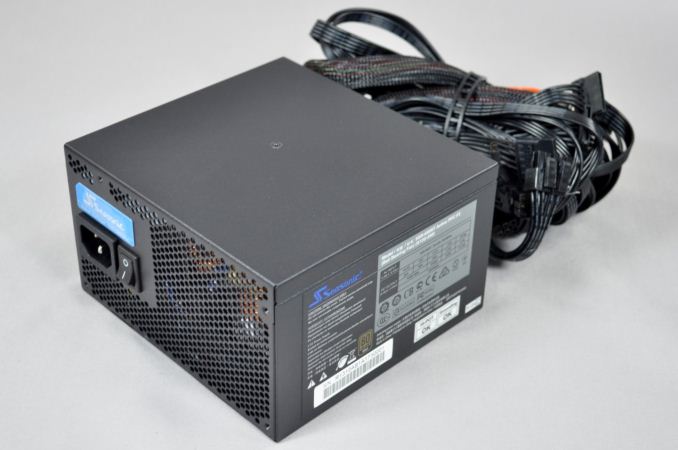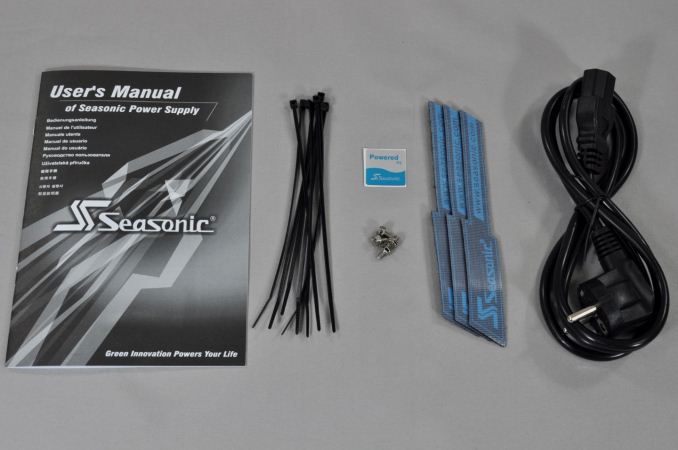Seasonic S12G 650W Power Supply Review
by E. Fylladitakis on February 28, 2014 2:20 PM EST- Posted in
- Cases/Cooling/PSUs
- Seasonic
- 80 Plus Gold

Introduction
It has been 16 months since our last power supply review, but the long wait is finally over. We have a new PSU and cases editor, and this is the first of many new PSU reviews to come. The first PSU to hit our new testing lab is the S12G 650W from Seasonic. Seasonic is a company that hardly requires any introduction; they are one of the oldest and most reputable computer PSU designers, manufacturers and retailers. Today, their products are held in very high regard by experts and enthusiasts. The company has their own retail range but they also serve as an ODM for many other well-known brands.
The target groups of the S12G series are advanced users, enthusiasts, and generally those who are not afraid to pay a bit more for advanced performance. It has impressive specifications and features, including an 80 Plus Gold efficiency certification and a "Smart and Silent Fan Control", as well as a five-year manufacturer's warranty. Despite that, it does not really break the bank, as the 650W version that we will be testing today retails for $89.99 plus shipping, a price that appears quite reasonable for such a product.
A year or two ago, you would have had a hard time trying to find a high quality 80 Plus Gold certified unit for that kind of price; however, today Seasonic's retail range has tight competition from several other manufacturers, such as Antec, EVGA, Rosewill, and others. As the Seasonic S12G is not a modular unit and doesn't really include any special features, the company clearly relies on quality and performance above all else; middling quality and average performance cannot be tolerated when several other manufacturers are breathing down your neck. Let us see if the 650W version of the S12G can live up to Seasonic's reputation.
Packaging and Bundle
Seasonic supplies the S12G PSU inside a fairly well designed cardboard box, with a black/blue color theme. The front of the box is tidy, with just a few badges with the certifications of the unit on display. The sides and rear of the box however are littered with information about the unit, in several languages.
Companies rarely supply anything noteworthy alongside their PSUs, especially the non-modular models, but the Seasonic S12G appears to be an exception. Besides the usual power cord, manual, and screws, Seasonic also includes a few cable ties, three blue/black velco cable straps, and a case badge with the company's logo.












77 Comments
View All Comments
WoodyPWX - Friday, February 28, 2014 - link
Ordered, thanks!mark28 - Friday, February 28, 2014 - link
How's their fanless PSUs now? The last few I got had a really annoying constant buzzing sound.Sivar - Friday, February 28, 2014 - link
I returned two of them before I ordered a Rosewill SilentNight (same as Kingwin Stryker STR-500). I heard the new generations of Seasonic are almost always silent, but I'm happy with the SilentNight, too.stratum - Saturday, March 1, 2014 - link
I got a fanless Seasonic PSU last month and the constant buzz was more annoying than a PSU with a fan. Waste of money when my main reason for getting it was negated.motas - Saturday, March 1, 2014 - link
For my builds that rarely draw 250 W max, after how reliable the PSU is, the next thing I care most about is the noise. Not just dBA numbers but also how it sounds. You could look at the frequency spectrum and most of the sounds people would find more annoying would show a pattern. A fan putting out 30 dBA could sound "worse" than one at 35 dBA. Last I care about is efficiency. As long as the PSU can reliably provide the requested power then I'm good. I'm not runing servers or crypto miners at constant load 24/7.E.Fyll - Saturday, March 1, 2014 - link
"A" in "dB(A)" stands for "acoustic", i.e. it is within the part of the dB range that your ears can perceive. You are actually right that a fan rated at 30 dB(A) can actually sound worse than a fan rated at 35 dB(A), but that's because these readings/ratings are being taken inside anechoic chambers. It is possible that due to vibrations or simply because of the frequency the sound is emitted at (reflections, echo, etc), the first fan could actually sound worse than the second fan inside a real room; but the instruments would read that as well. We are doing noise testing inside a real room so that is as close to reality as it gets.I understand that some "types" of noise might be more bothersome than others to some people, but that is relative and mostly psychological; I cannot possibly assess that quantifiably.
morso - Saturday, March 1, 2014 - link
How about provide a frequency spectrum plot. You know, white noise vs colored noise. People can then decide for themselves if the sound is good or not.g.davis - Saturday, March 1, 2014 - link
If that's not possible then maybe record the sound and post an audio file. Hopefully, the recording process can be standardized. That buzzing sound from a fanless Seasonic PSU was extremely annoying especially for a bedroom PC that doesn't get turned off. I'd rather get a louder PSU with a fan. Which I did.E.Fyll - Saturday, March 1, 2014 - link
You actually suggested inserting a graph with spectral profiles in a review?People cannot decide "if the sound is good or not" by looking at such a graph, not only because it will not tell you anything of actual relevance but because, well, they cannot read it. Aside the fact that only a handful people can actually read such a graph, do you realize the kind of equipment that is required to generate it? Space aside, we are talking about hundreds of thousands of dollars.
This is absolutely out of the question, sorry.
tosisgray - Saturday, March 1, 2014 - link
Why not provide an audio recording. Sometimes it's the subjective parts people care about most. With your statement, it seems you're not targeting professiosnals anyway. Efficiency doesn't matter much to the crowd you seem to be targeting unless the vendor is falsely advertising their product. These PSUs will likely go inside homes. Maybe bedrooms and living rooms.